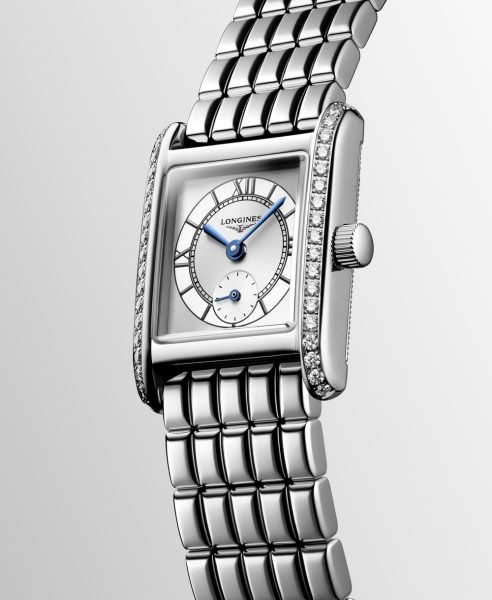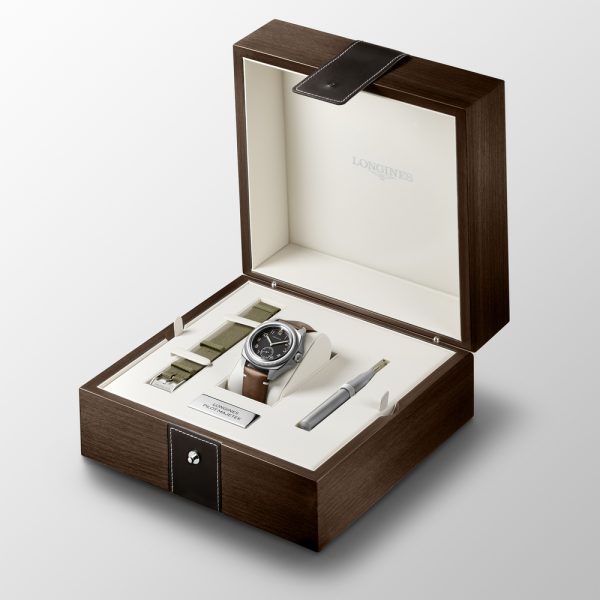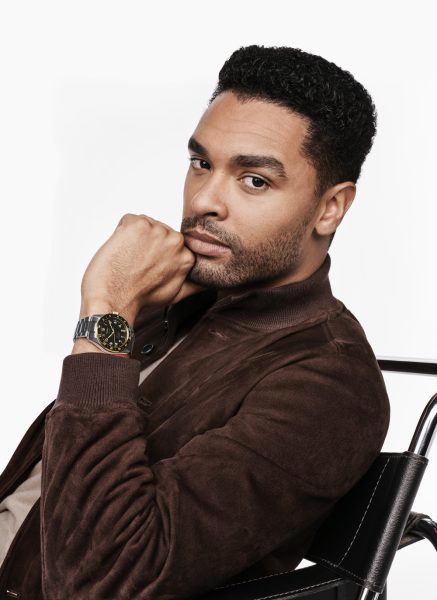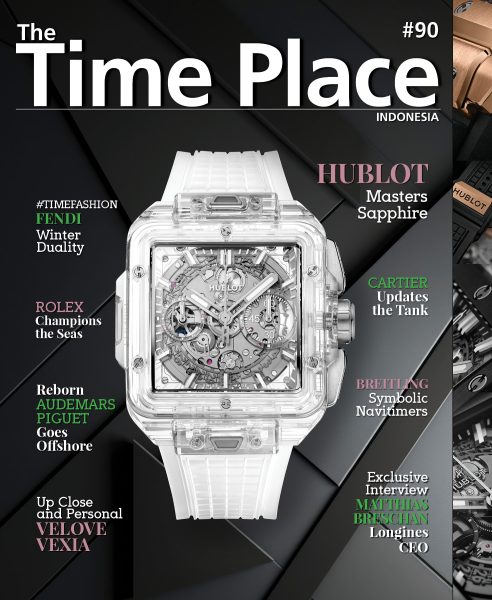Success Story: Exclusive Interview with the CEO of Longines, Matthias Breschan
By The Time Place Magazine
With extensive prior experience managing renowned watch brands within the industry, Matthias Breschan is no newcomer. Nevertheless, he assumed the position of Chief Executive Officer at Longines during a rather challenging juncture, precisely on July 1, 2020, right at the onset of the COVID-19 pandemic lockdown. Despite facing unprecedented challenges, Longines adeptly navigated the shifting market dynamics and exceeded expectations, gaining increased popularity and profits beyond anticipation. In our conversation with Mr. Breschan himself, we explore what propels Longines to succeed and endure as well as his vision for the nearly two-century-old brand.

What factors do you think played a role in the double-digit growth that Longines experienced during the pandemic?
Heritage takes centre stage in our communications. We actively engage with collectors, organising meetings, conferences, and inviting them to product presentations to share the rich history behind our timepieces. The second factor that distinguishes Longines is our equal strength in both classic and sports watch offerings. Consequently, we sell exactly 50% to men and 50% to women, which is very rare. Typically, the distribution is 80:20 or vice versa, both in terms of both the watch offerings and the customers’ profile. When I look at our competitors, we are positioned in a price range of 1,000 – 5,000 USD. That was true for the past 20 years, and it will be true for the upcoming 20 years. Notably, we have been dominant in this market, holding between 40% to 80% market share in this segment, depending on the country.
What are Longines’ key markets now and how does the strategy differ between these key markets?
Our biggest market is still China due to its huge size. The USA follows as our second-largest market. In recent years, we experienced significant growth in Europe and Southeast Asia. However, we acknowledge a historical mistake; we focused excessively on attracting tourists, allowing retailers to exclusively showcase collections for tourists, neglecting the domestic customer base. This was a critical oversight, as our priority should always be the local market. The pandemic served as a wake-up call, prompting a return to basics. We now prioritise developing products that appeal to our domestic customers, recognising their significance. In Southeast Asia, European countries, and the US, strategic changes have been implemented, contributing to substantial growth by addressing necessary adjustments and elevating our brand to a significant next level.

Longines recently launched the new Mini DolceVita. Could you tell us more about it?
We launched the new Mini DolceVita just a month ago with Jennifer Lawrence, commemorating a rich part of Longines’ history. Longines first introduced square watches in 1916, and they developed the first rectangular watch in 1918. And then the DolceVita watch was relaunched in 1997, drawing inspiration from a model dating back to 1927. To pay homage to this rich heritage, we’ve added the Mini DolceVita, a square (or almost square) model, to our collection. This design reflects the elegance we believe in, encapsulated by our slogan since 1999, ‘Elegance is an attitude.’ This model, inspired by the ’30s, combines straight and circular lines typical of that era. The bracelet’s unique design is reminiscent of the architectural style of the 1930s, like the brick construction seen in landmarks such as the Empire State Building in New York.
DolceVita is a collection for both men and women, and while it’s true that a majority of buyers are ladies, we also offer super elegant watches for men. The beauty of our collection lies in the fact that we no longer categorise watches as specifically for men or women. Today, our watches are considered genderless and ageless—it’s a matter of mindset. When you visit our website, you’ll notice that we still use the terms ‘men’s watches’ and ‘women’s watches,’ but this is primarily for search engine optimisation. The most searched terms on Google are ‘women’s watches’ and ‘men’s watches,’ and using these terms helps maintain our Google ranking. Interestingly, with our Mini DolceVita, we’ve had many men come to the store expressing interest, saying, “I would like to have this watch, perhaps a little bigger with an automatic movement.”
Earlier this year, Longines introduced the Pilot Majetek watch. How do you correctly pronounce it?
The name comes from the Czech language, and in Czech, it’s pronounced ‘mayetek.’ The history behind it is fascinating. The watch features a rotating bezel, originally developed for aviation and pilot watches, later adapted for diving watches—now well-known for the latter. Longines holds a patent dating back to 1935, establishing us as the inventors of the turning bezel for diving watches. The Majetek watches are special; they were developed for the Czech army and used by Czech pilots. During World War II, when the Czech territory was occupied by the Germans, these pilots flew from the UK, showcasing remarkable courage in attacks against the Germans. Engravings on the case back, unique due to military specifications, often read ‘Majetek and (the name of the pilot).’ These pilots were famous for being pictured with their dogs, serving as mascots.

An interesting coincidence occurred when we discovered the manager of the hotel where we stayed for the equestrian final of the Global Champion Tour in Prague owns a Majetek. It was passed down from his great-great-grandfather, a piece with high emotional value, symbolising the courage of Czech army pilots during the war. The construction of the Majetek watch is extremely complex, and Longines is likely the only brand with this unique design in the market today. Although another brand attempted it in the past, they no longer produce it due to difficulties. Initially not water-resistant, today, all our watches meet this standard. The complexity arises from the need for a water-resistant case with an integrated ring for the flight indicator to move. The turning bezel comes on top of this water-resistant case, allowing the movement of the ring with the fixed flight indicator. It’s a super-complicated and intricate construction. Since its launch, the Majetek has been permanently sold out.
What Longines timepiece are you wearing today?
I wear the Longines Spirit Zulu GMT, and it recalls the rich history that Longines invented the GMT movement in 1925, and that we are definitely the watch brand with the strongest link to the world of aviation because we incorporated all the big aviation pioneers in the 1920s, like Charles Lindbergh, Amelia Earhart, Amy Johnson, Howard Hughes, just to name a few of them. Longines equipped many airplanes with flight instruments in the 1920s. So, the ties with pilots was a very natural relationship that started because Longines had a huge experience in the world of aviation.

While many brands claim aviation ties, a closer look often reveals little substance in their history and heritage. It’s amusing; one brand claimed aviation involvement since 1907, despite no airplanes at the time. Another launched a new movement with planes, stating it was from 1953, but the planes referenced were from World War II, not 1953. The storytelling in the industry can be peculiar, highlighting why collectors and young audiences appreciate Longines for its truly authentic history and heritage.
What can we expect from Longines next year?
Our core values—precision, elegance, and tradition—are seamlessly integrated into each new introduction, evident in the 2023 novelties and set to persist in the 2024 collection. Expect heritage-inspired innovations next year, with a focus on our significant women’s market, contributing 50% of sales. Look forward to the debut of powerful classic watch collections and the enduring global prominence of the Longines Master Collection.
Read the latest issue of The Time Place Magazine
for free now!

